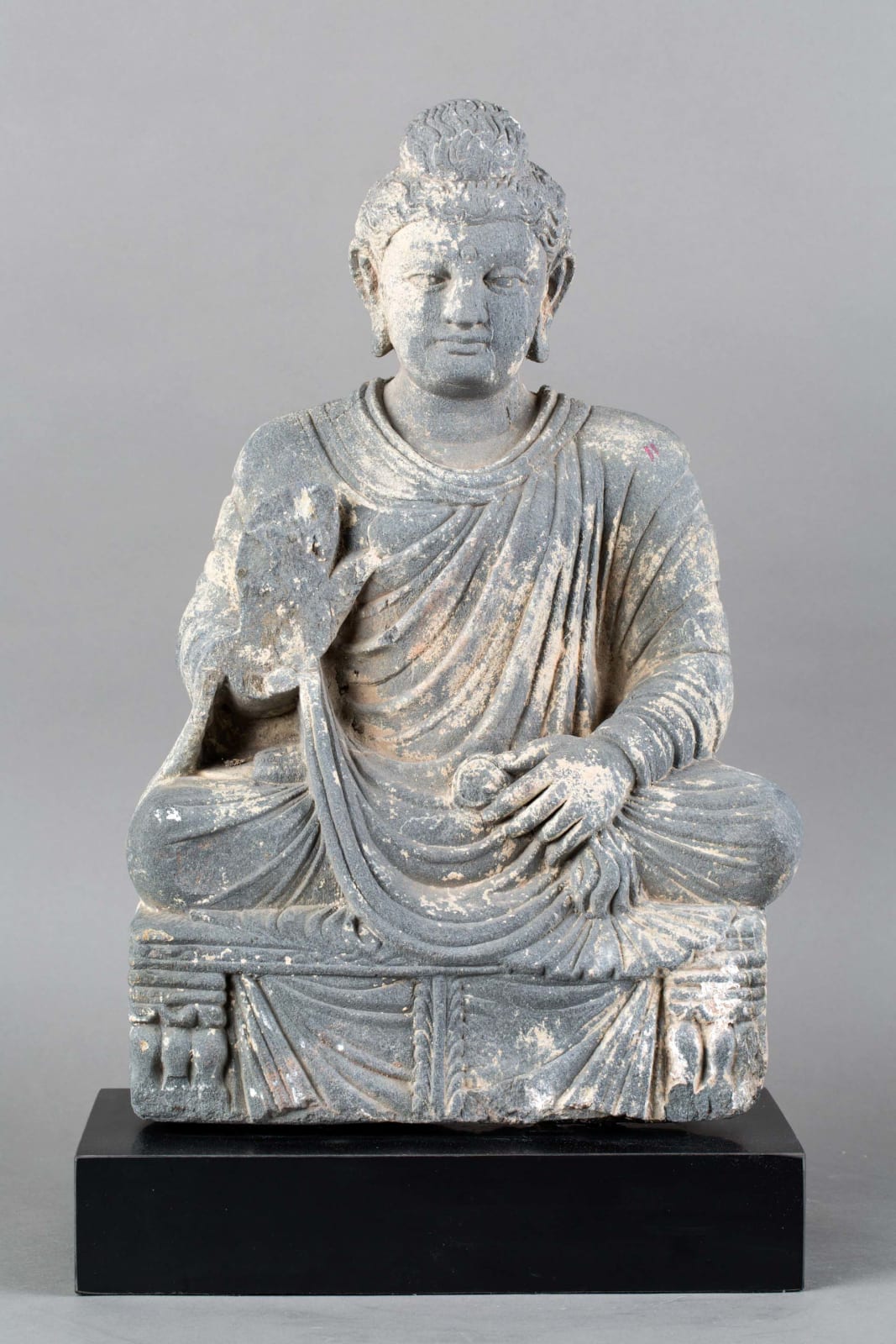Schist stone Gandhara seated statue of the Buddha, 200 CE - 500 CE
Schist stone
CB.3398
Further images
Gandhara’s geographical position, situated between the Persian world to the west and the Indian to the east, ensured that it was open to a wide variety of artistic influences. Often...
Gandhara’s geographical position, situated between the Persian world to the west and the Indian to the east, ensured that it was open to a wide variety of artistic influences. Often described as a ‘cultural melting pot,’ its strategic importance left it vulnerable to attack. Briefly in the hands of Alexander the Great between 327 -326 B.C., Greek artistic conventions long played an important role in local production. However whilst Gandhara clearly came under the influence of an extraordinary wide range of outside influences, it was also an exporter of ideas. This is most apparent in relation to the spread of Buddhism from India into other parts of Asia. Gandharan monks and scribes were particularly active in areas of China. According to tradition Buddhism was first introduced into the Gandharan region under the patronage of Asoka, emperor of the Mauryan dynasty, in the third century B.C. The first significant physical remains to survive, including stupas and figurative sculpture, date from the first century B.C. Between c.100-400 A.D. sculptors working in schist, terracotta and stucco produced an astonishing number and variety of Buddhist images.
The Buddha is depicted sitting on a lotus pedestal with his legs crossed, his left hand holding a part of his robe, while his right, although slightly damaged, is in abhaya (reassurance or no-fear) mudra. Incised lines has been added to suggest the folds of the cloth. His hair loosely knotted and topped with a ushnisha, the Buddha has a soothing and serene smile on his face, bringing warmth and enlightenment to the mundane world for the layman.
The Buddha is depicted sitting on a lotus pedestal with his legs crossed, his left hand holding a part of his robe, while his right, although slightly damaged, is in abhaya (reassurance or no-fear) mudra. Incised lines has been added to suggest the folds of the cloth. His hair loosely knotted and topped with a ushnisha, the Buddha has a soothing and serene smile on his face, bringing warmth and enlightenment to the mundane world for the layman.







